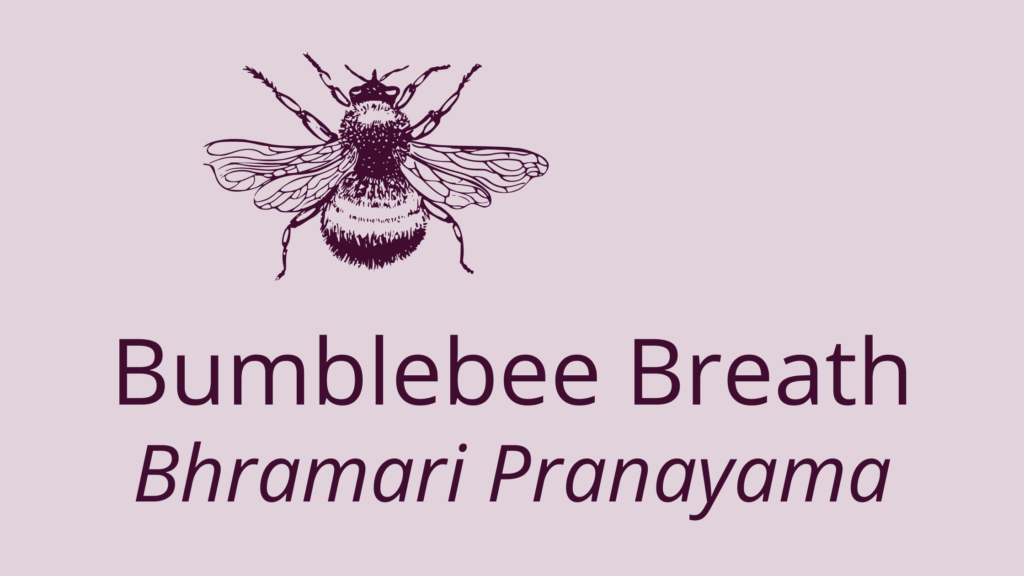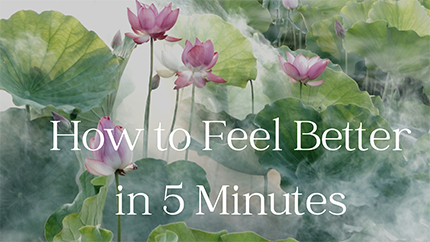Do you feel anxious, distracted, or overwhelmed? You’re not alone! Today I’m sharing my favorite quick fix technique, a handy-dandy tool that’s been around for thousands of years. Talk about time-tested!
You’re busy and you have a lot going on, plus you’re constantly bombarded with information. Something is always demanding our attention, whether it’s social media, the news, or the never-ending flurry of emails. There’s no “off ” button in sight. Our eyes are tired, our brains are tired, and our nervous systems are fried. We never shut it all off and give ourselves time to relax and recharge. Is it any wonder we feel a little crazed?
Human beings were not designed to sustain living in a constant state of fight-or-flight. Rather, fight or flight was only something we were meant to use in short bursts, like running away from things that wanted to eat us.
Most of us forget to set aside time to relax but it’s absolutely necessary for our physical, emotional, and spiritual well-being.
So why don’t we do it?
While the reasons may differ from person to person, the effects do not. We are stressed out, burnt out, and overwhelmed. So many of us have trouble sleeping that sleeping pills are a 400 million dollar industry. Living this way isn’t sustainable, and it isn’t healthy.
Many of us argue that we don’t have time to relax. We even joke about it: “I’ll relax when I’m dead.”
Can you spare five minutes? That’s all it will take to give your nervous system a quick yet solid reboot.
Even if you are a single parent or the busiest CEO on the planet, I guarantee you can find five spare minutes. Put down your phone, tear your eyes away from the computer, let the pile of laundry languish a few more minutes. Vanish into a quiet place, (like your car or your closet) where you won’t be disturbed. Do whatever you need to do to reclaim five minutes for yourself. Your nervous system and your immunity will thank you for it.
Let’s dive in. I’m going to share my absolute favorite pranayama technique (pronounced praa·nuh·yaa·muh), Pranayama means “breath control” and these practices originated in India thousands of years ago.
This particular form I’m sharing today is called Bumblebee Breath, or Bhramari Pranayama and I love it because it works on so many different levels. First, slower, deeper breathing brings more oxygen into your body, while controlling the breath helps to refocus and relax your mind.
This technique also has a vocal component, which gives you an added bonus. Whenever you chant, hum, or sing, you stimulate the vagus nerve which is the longest nerve in the body, running from your brain to your colon (not to be confused with Vegas, baby). This nerve is associated with rest and regeneration, and will reset your nervous system.


Bhramari Pranayama How-To
- Find a comfortable seat. It doesn’t matter whether you choose a chair, the floor, the couch, or the beach. Any of them will work.
- Close your eyes. Feel your sitting bones grounding down. Stretch the crown of the head up towards the sky. Breathe.
- Bring your awareness to your breath. Follow it in and out for a couple of cycles, and begin slowing down and smoothing out each breath.
- Briefly scan your body beginning at your crown of your head and working your way down. Relax any areas you feel tension. Let the shoulders drop away from the ears, relax the muscles of the face and jaw.
- On the next breath inhale normally, then press the lips together and hum while exhaling through the nose.
- Continue humming until you have exhaled all the air out of your body. Keep the eyes closed and breathe normally for a moment.
- Let’s add another component for even deeper relaxation. You will use your hands to cover your eyes and close off your ear flaps. According to ancient Indian scriptures, withdrawing the senses leads to even deeper relaxation. Since sight and sound are two of our most powerful senses, (as well as those that are usually the most stimulated/overstimulated most frequently) shutting them off for a few moments leads to more powerful relaxation.
- Place your thumbs on your ear flaps, the soft cartilage on the outside of your ear. Gently press down until your earflap is closed and sound is muffled.
- Use your remaining four fingers to gently cover your eyes and block out any surrounding light. This will give your eyes a rest as well.
- Inhale normally, exhale through the nose while pressing the lips closed and humming. Continue exhaling and humming until the exhale is complete.
- Repeat 2 to 3 more times, then return your hands back to your lap and sit with your eyes closed for a few moments. Notice how you feel. What differences do you notice? How does your mind feel? How does your body feel?
Bee Breath is a simple, effective practice you can return to over and over again, even on your busiest days. It may become your new favorite self-care activity, the best 5 minutes of your day.
Make Bee Breath your new go-to, anytime you need a quick reset.
Prioritizing time to nourish your well-being is one of the most important things you can do for yourself and the other people in your life. After all, when we take time to recharge and prioritize our well-being, we show up as our best selves in everything we do.
Wishing you peace, joy and wellness always.


Love this !! Thanks so much for sharing Grier.